The Annapurna Conservation Area (ACA), established in 1992, is the largest conservation area in the country, covering an area of 7629 sq. KM. It is spread across the Annapurna Himalayan range and has specific geographical features like the Kali Gandaki River Gorge, which is considered to be the deepest in the world.
The Annapurna Conservation Area Project (ACAP) was initially implemented in 1986 by the National Trust for Nature Conservation (then called the King Mahendra Trust for Nature Conservation) as a pilot project in Ghandruk, covering one Village Development Committee (VDC) with an area of 200 square kilometers.
In 1990, the working area had grown to 16 VDCs, and the organization was undertaking activities in an area of 1,500 square kilometers. It was officially gazette in 1992 to extend to the present size comprising 55 VDCs.
Districts of Annapurna Conservation Area
ACA has spread across several districts in Nepal where geographical and cultural terrains vary. The districts that lie in the ACA are:
Kaski District:
This district has many tourist attractions and is one of the busiest tourist centers in Nepal because of the city of Pokhara. It is the starting point or, often referred to as, the point of entry to the entire Annapurna region. The area north of Pokhara falls under the Annapurna Conservation Area and offers some of the most sought-after trek routes, which are considered the best place.
Key Highlights: Pokhara, Sarangkot, Phewa Lake, and access to the Annapurna Base Camp trek.
Lamjung District:
Lamjung district of Nepal is famous for the green hills and small villages which are of cultural importance. The part of the ACA in the east goes up to this district where several trekking options proceed further inward the Great Himalayas are available.
Key Highlights:
Traditional Gurung villages, lush hills, and access to the Annapurna Circuit.
Manang District:
Manang district is located in central Nepal and to the north of the Annapurna range. Its characteristic features are rather dry and high elevation. It also comprises the well-known Manang Valley that is one of the most popular points of the Annapurna Circuit trekkers.
Key Highlights:
Valley of Manang, Dhaulagiri base camp and Lake, Round Annapurna trekking, Thorung La Pass Trekking.
Myagdi District:
Myagdi is situated to the west of the Annapurna range; however, it comprises a part of the Kali Gandaki Valley as well. The district is famous for its geographical structures like tough mountains and warm, local houses and provides tracks to Dhaulagiri and Annapurna circuits.
Key Highlights:
Kali Gandaki Valley thermal springs and the trekking route of Mohare Danda, Annapurna Daulagiri.
Mustang District:
The settlement of Mustang is situated to the north of the country and is very desert-like in nature. The district features the Kali Gandaki Gorge, the deepest gorge of the world, and provides the only entry to the isolated upper Mustang area with its fascinating people and geography.
Key Highlights:
Peaks, mountains, valleys, river, Kali Gandaki, Thakali people of Jomsom, Kagbeni, Muktinath Temple, and the geomorphology of Upper Mustang.
Annapurna Conservation Area during different periods of time
Summer/Monsoon Season (June to August)
The three months of the summer season in Nepal are June, July, and August, and these fall under the monsoon period. This region has warm climates and is characterized by a lot of rainfall throughout the year. However, there are still some treks possible during the wet season in the Annapurna region, though few of them include the Annapurna Circuit Trek and Nar Phu Valley Trek.
These routes being in the rain shadow area have relatively less rainfall and can be perfect for trekking during this season.
Paths can be swampy, and leeches are present, but once the clouds lift, the view of the mountains is breathtaking. If rain and leeches are a problem, the best time to do trekking is during the dry seasons.
Autumn Season (September to November)
The best season for trekking through the Annapurna region is the autumn season, from September to November. After the monsoon, the weather gets fine, and one can get to have very beautiful views of the mountains.
The climate is warm, mostly sunny, and with low rainfall, which is quite favorable for trekking activities. This season of the year is characterized by high traffic of hikers, and thus, you will experience a lively atmosphere while on the mountains.
Thus any hiking to either the Annapurna Circuit or Annapurna base camp, or any other trek for that matter, the autumn period is one of the best in relative to the experiencing of the Himalayan scenery.
Winter Season (December to February)
Long winters, specifically December, January, and February, are severely cold, with considerable snowfalls in the Annapurna region. This season can be very unforgiving in terms of temperatures, but trekking is possible here with certain risks and benefits.
During this time, the mountain views are the most appealing since the skies are free from clouds, and the trails are less occupied. However, if you are planning it during the winter season, it is advisable to have appropriate clothing for the cold season.
All the treks are doable, though special care is to be taken around Annapurna Circuit Trek, Annapurna Base Camp Trek, and Nar Phu Valley Trek since they are tread through snow & ice.
Spring Season (March to May)
The second favorite season for trekking the Annapurna region is during spring, which is from the month of March, April, and May. The weather is sunny and steady with increasing temperatures, so it's good for going out and having fun. To add to it, getting there also coincides with the flowering of rhododendrons and makes the trails of pink and red blooms.
This season is suitable for beautiful mountains and colorful natural scenery that make the beautiful scene to see for most of the people. Thus, trekking in spring is the most enjoyable due to its climate and the fascinating scenery in each destination.
Why visit the Annapurna Conservation Area?
The Annapurna Conservation Area (ACA) is famous for several key features and attractions:
Top 5 Annapurna Area Trekking Destinations
Annapurna Base Camp Trek: Unleash the Adventurer
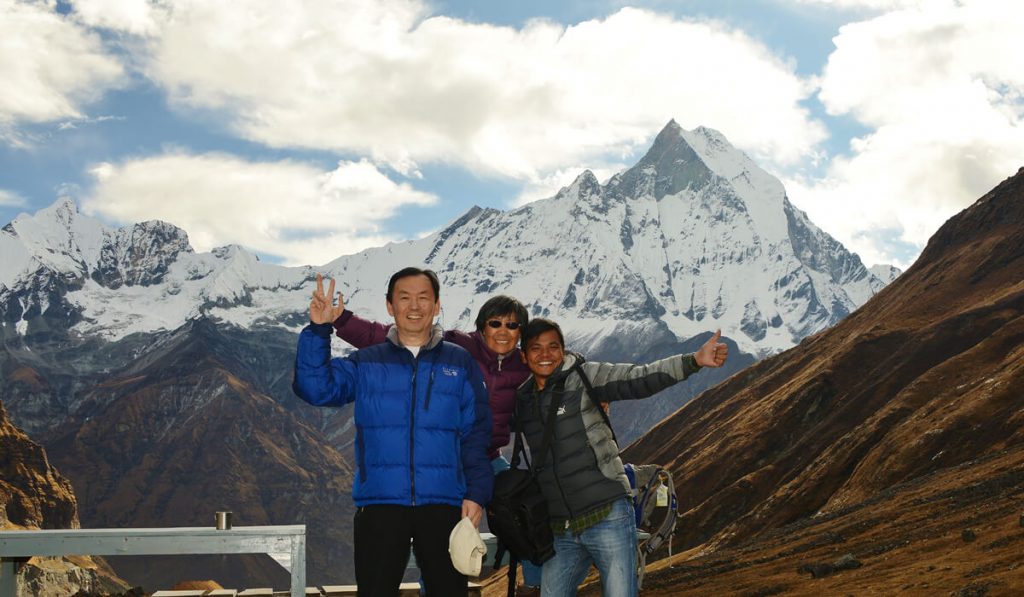
Duration: 7-14 Days
Difficulty: Moderate
Maximum Altitude: 4130 meters
Accommodations: Teahouses/Guesthouse
Best Seasons: March-May & Sept-Dec
Go on one of the most famous treks in Nepal, the Annapurna Base Camp Trek. Beginning and ending in the beautiful town of Pokhara, on the shore of Phewa Pokhara Lake, this adventure provides remarkable views of some of the great Himalayas, such as Dhaulagiri, Annapurna, Machapuchhre, and Hiunchuli.
Highlights of the ABC Trek
- Sunrise at Poon Hill (3210 m): Watch from here the spectacular view of a sunrise which attracts thousands of tourists.
- Serene Evenings in Pokhara: Take a break by the peaceful lakeside of Pokhara and get mesmerized by the calmness of the place.
- Cultural Encounters: Visit quaint Gurung ethnic settlements like Ulleri, Ghorepani, and Chhomrong to learn more about this group and their way of life.
- Hot Springs at Jhinu Danda: After a tiring journey of trekking, relax your muscles in the natural hot springs and rejuvenate your mind.
Key Points to Remember
- Crowded Paths: Despite being situated in the hills of Nepal, it is a famous destination, and this makes the trails to be busy, particularly during the hiking seasons. For the people who prefer to be alone and away from noisy places, this may not be the best option.
- Avalanche Precautions: Avalanches are common throughout the part of the trail that connects Hinku Cave and Deurali. Be prepared for possible detours to ensure safety.
Poon Hill Trek: Discover the Magic of the Himalayas
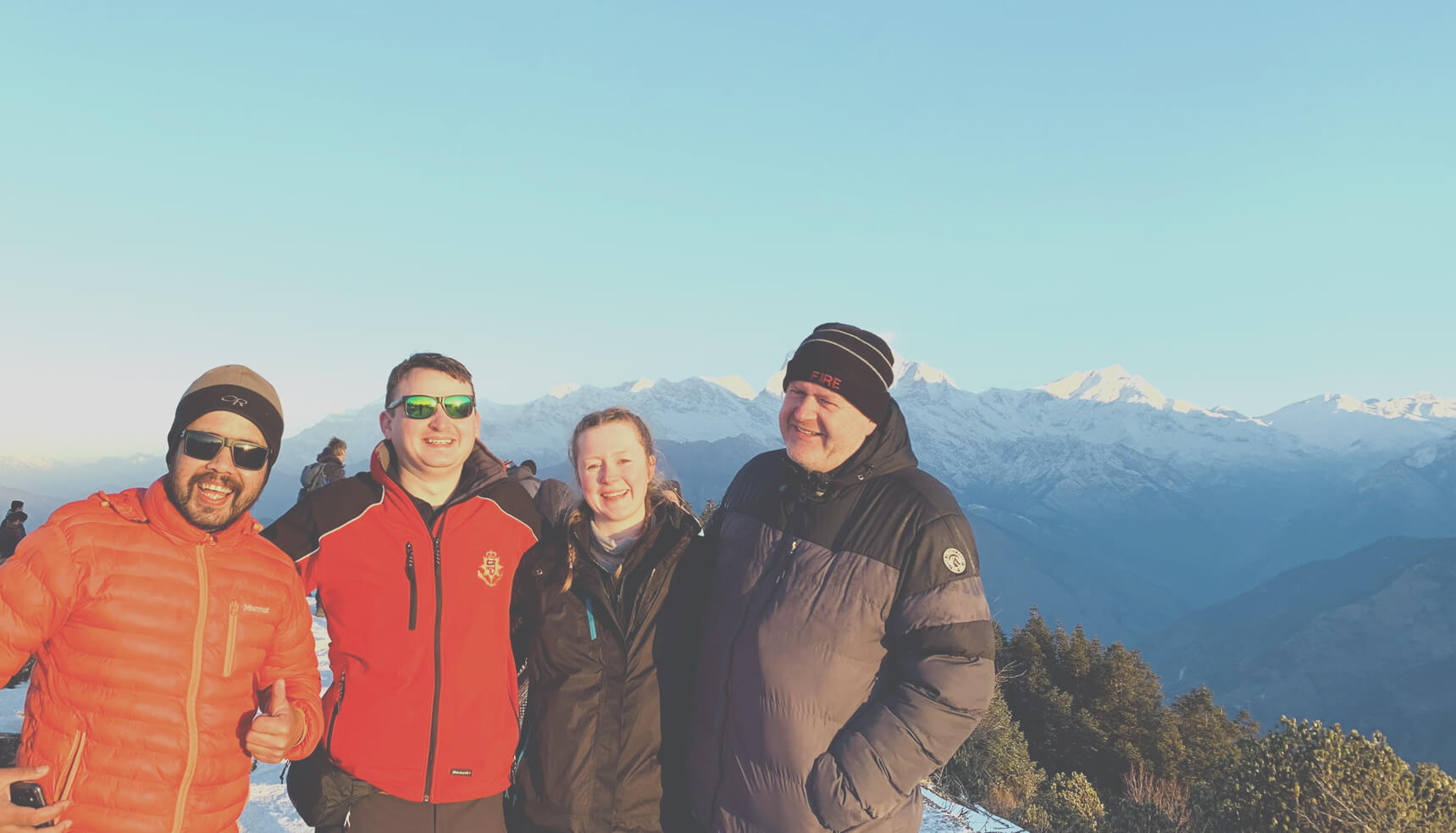
Duration: 4-6 Days
Trekking Level: Easy to Medium
Maximum Height: 3210m
Accommodation: Teahouse
Best Time: Mar-May & Sep-Dec
If people doubt their physical endurance for trekking for days with steep climbs. In that case, Poon Hill is a recommendation for them as it only takes 4-6 days to trek with beautiful views and culturally inclined villages. This trek starts and ends in the charming town of Pokhara, located by the peaceful Phewa Lake.
Highlights of the Annapurna Poon Hill Trek
- Stunning Sunrise at Poon Hill (3210 m): Visit one of the most famous sunrise viewpoints that offer a picturesque view of the Annapurna and Dhaulagiri mountain ranges.
- Charming Villages: Pass through pretty villages such as Ghorepani, Ulleri, and Ghandruk and get enchanted by the niceties of the Gurung and Magar people.
- Rhododendron Forests: Pass through beautiful forests of rhododendrons that turn into spectacular shades of color in early spring.
- Relaxing in Pokhara: After the adventurous trek, take some time to relax in the beautiful city of Pokhara by the lakeshore.
Key Points to Remember
- Ideal for Beginners: The Poon Hill Trek is a relatively easier trek that can be done by beginners and families to understand the actual trekking in the Himalayas.
- Popular Route: Despite the numerous benefits that come with the trail, the formation attracts many people, especially during the crowded seasons. Make sure to time your hike if you don’t want to share the experience with others.
- Comfortable Accommodations: Spend nights in proper teahouses, which serve as a comfortable place to relax after crossing each day.
Annapurna Circuit Trek: Journey Through the Heart of the Himalayas
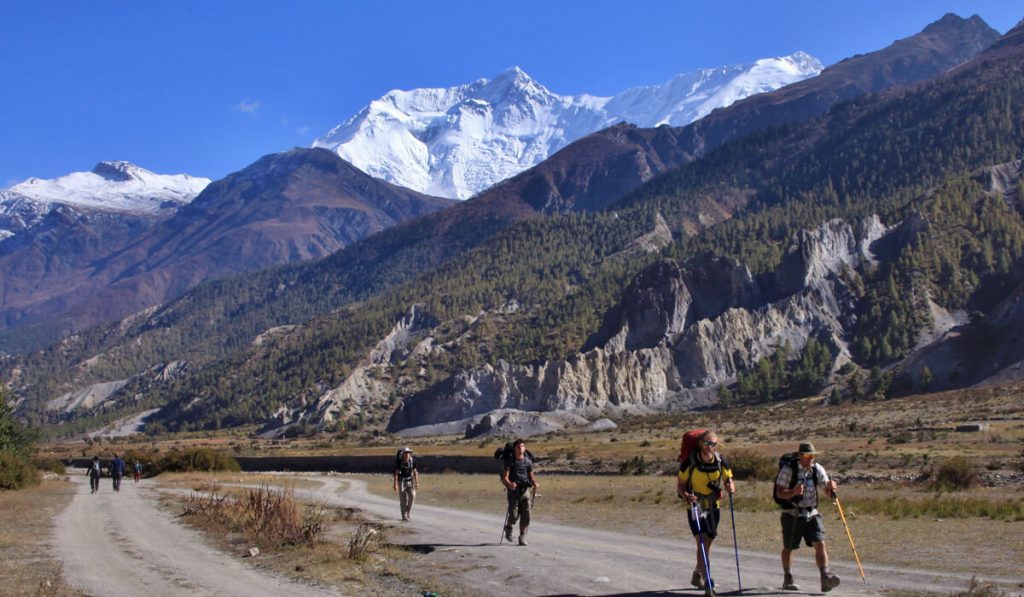
Duration: 14-21 Days
Difficulty: Moderate to Strenuous
Maximum Altitude: 5416 Meters
Accommodations: Teahouse/Guesthouse
Best Seasons: March-May & Sept-Dec
The Annapurna Circuit Trek is a classic trek that takes you through diverse landscapes, cultural treasures, and breathtaking mountain views. Starting from the lush subtropical forests and terraced fields, this trek ascends to the arid, high-altitude deserts near the Tibetan plateau, offering an unforgettable journey through the Annapurna Conservation Area.
Highlights of the Annapurna Circuit Trek
- Thorong La Pass (5416 m): Experience the thrill of crossing one of the highest trekking passes in the world.
- Diverse Landscapes: Trek through a variety of terrains, from green forests and terraced fields to rugged mountain landscapes and high-altitude deserts.
- Cultural Richness: Explore traditional villages inhabited by diverse ethnic groups, including Gurungs, Thakalis, and Manangis, and experience their unique cultures and traditions.
- Spectacular Mountain Views: Enjoy panoramic views of Annapurna, Dhaulagiri, Machhapuchhre, Manaslu, and other majestic peaks.
- Natural Hot Springs: Relax in the natural hot springs at Tatopani, a perfect way to unwind after days of trekking.
Best Features
- Diverse Experience: The trek offers a rich tapestry of natural and cultural experiences, making it one of the most varied treks in Nepal.
- Scenic Beauty: Traverse the stunning landscapes of the Annapurna Conservation Area, home to lush forests, alpine meadows, and towering peaks.
- Accessible Route: Well-maintained trails and teahouse accommodations make this trek accessible and comfortable for a wide range of trekkers.
Tilicho Lake Trek: Discover Hidden Treasures of the Himalayas
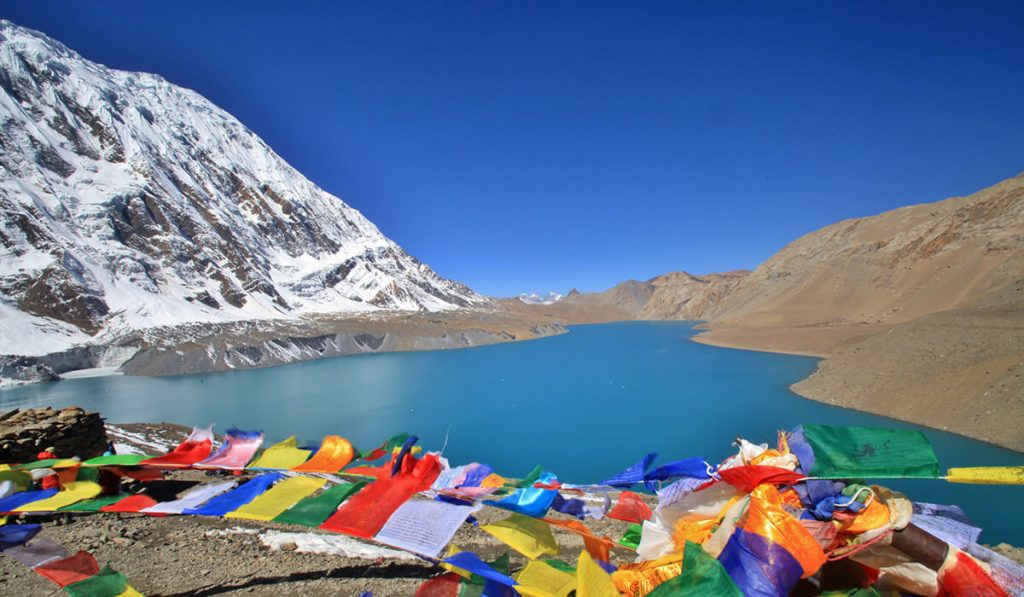
Duration: 11-15 Days
Difficulty: Easy to Moderate
Maximum Altitude: 4949m
Accommodation: Tea house/Homestay Lodges
Trekking Seasons: March, April, May, September, October, November, December
The Tilicho Base Camp Trek is exceptional because it gives you a chance to visit such exotic place as Tilicho Lake – the lake at the height of 4949 meters. This trek, moving through the vegetative slopes of the foothills to the stark isolation of the high alpine pastures, provides the best of the natural scenery, cultural interactions, and the trekking challenges in the Annapurna Conservation Area.
Highlights of the Tilicho Base CampTrek
- Tilicho Lake (4949 m): Tilicho Lake is one stunning lake that is really famous among tourists and trekkers for it blue water and its attractive location.
- Diverse Landscapes: Travel past lush tropical forests and rice paddies, arid uplands, and tracks through barren, rocky mountains.
- Cultural Insights: Visit ancient settlements and the locals, which are Gurungs, Thakalis, and Manangis, to know more about their distinct customs.
- Scenic Beauty: From this trek, the trekkers are able to get a close view of the mountains, including Annapurna, Dhaulagiri, Manaslu, and other Himalayan.
- Manang Exploration: Spend some time in the lovely village of Manang which is an important place from the cultural prospective besides possessing a beautiful appearance.
Best Features
- Hidden Gem: Unlike other trekking areas, Tilicho Lake is relatively newer and attracts fewer trekkers making it even more beautiful and calm.
- Natural Beauty: Cross various terrains at the Annapurna Conservation Area that comprises of a diverse biological zone and impressive scenery.
- High Altitude Adventure: Feel the adrenaline of climbing to the two one of the highest lakes on the planet accompanied with these majestic tops.
Mardi Himal Trek: Unveil the Untouched Beauty of the Himalayas
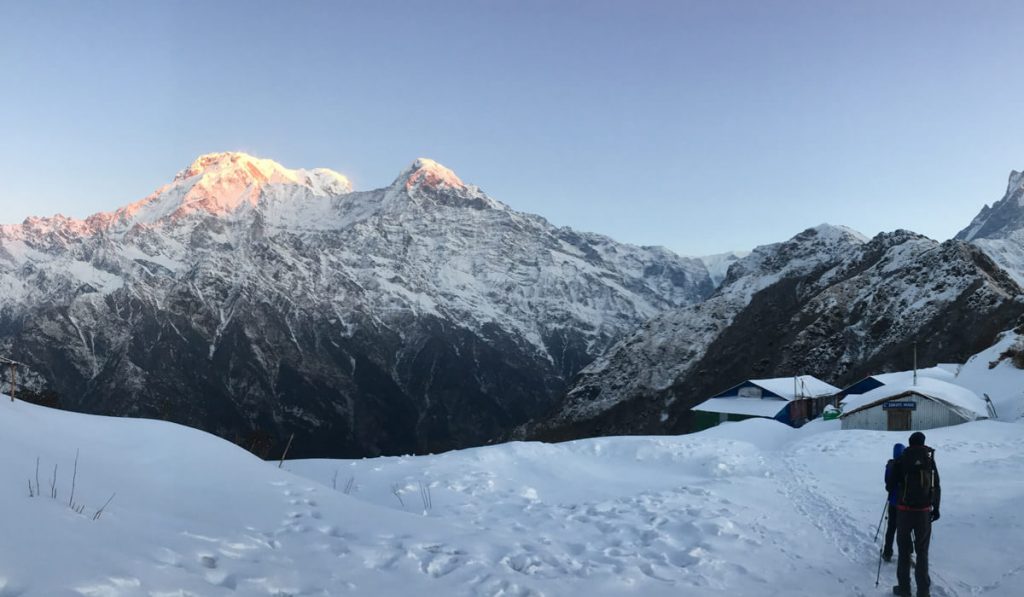
Duration: 5-7 Days
Difficulty Level: Moderate
Maximum Altitude: 4500 Meters
Accommodations: Teahouse/Guesthouse
Best Seasons: March-May & Sept-Dec
The Mardi Himal Trek is a hidden gem in the Annapurna region, offering stunning views and a serene trekking experience. This trek, starting from the vibrant city of Pokhara, takes you through pristine forests, charming villages, and up to high ridges that provide panoramic views of the majestic Himalayas, all within the Annapurna Conservation Area.
Highlights of the Mardi Himal Trekking
- Mardi Himal Base Camp (4500 m): Reach the base camp of Mardi Himal, with breathtaking views of Mardi Himal, Machhapuchhre (Fishtail), Annapurna South, and Hiunchuli.
- Off-the-Beaten-Path: Enjoy a quieter and less crowded trail compared to other popular treks in the Annapurna region.
- Diverse Landscapes: Trek through lush rhododendron forests, alpine meadows, and rugged mountain terrain.
- Cultural Experience: Visit traditional villages and interact with the local Gurung and Magar communities, experiencing their warm hospitality and unique cultures.
- Scenic Beauty: Marvel at the stunning landscapes and panoramic mountain vistas throughout the trek.
Best Features
- Secluded Trails: The Mardi Himal Trek offers a peaceful trekking experience with fewer trekkers, allowing you to enjoy the tranquility of the mountains.
- Breathtaking Views: Witness some of the best views of the Annapurna range, including close-up views of Machhapuchhre (Fishtail) and Mardi Himal.
- Natural Beauty: Traverse through the diverse and picturesque landscapes of the Annapurna Conservation Area, known for its rich biodiversity and stunning scenery.
Biodiversity
Flora (Plants):
Starting below 1000m, you can see vegetation like sal, pine, and various species of oaks. As you go further, at a height between 1000 and 2000 m, you will see evergreen and deciduous forests (chestnut, maple, and alder). As you reach the upper temperature, you can get to see plants and trees like walnuts, oak, and rhododendron (national flower).
Above 3000, the tall, high trees slowly disappear as you ascend. Blue pine, fir, and juniper are the common trees and plants you can see. Lastly, above 4000m, you will get the chance to see tall trees; only herbs, alpine grasses, and medicinal plants like yarsagumba and Himalayan blue poppy are available.
(Fauna/Animals):
Regarding the fauna, this protected area includes a wide variety of animal species that are both rare and endangered. If you are lucky, you can see mammals like Himalayan Tahr (wild goat), Red Panda, Musk Deer, and even Snow Leopard, as well as Himalayan Black Bear.
Whereas Annapurna is also home to more than 100 species of birds, from the national bird of Nepal, the Himalayan Monal, to different birds like the Pheasant and Himalayan Griffon.
Cultural Heritage:
Ethnic Diversity: The ACA is inhabited by ethnic groups, mainly Gurung, Magar, Thakali, and Loba people. These groups have their own culture, traditions, and lifestyle; you can learn about their lifestyle, listen to the story, and taste the unique Nepalese cuisines.
Cultural sites: Not only in ethnic diversity, but the Annapurna Conservation is also rich in cultural heritage. It is filled with ancient monasteries, small traditional villages, and cultural festivals.
Scenic Beauty:
- One of the major highlights of the Annapurna Conservation Area is its breathtaking and stunning beauty. The region is home to some of the world's top peaks, including Annapurna, Dhaulagiri, Machhapuchhre (Fishtail), and Hiunchuli. These majestic mountains are a constant presence, offering awe-inspiring views from start to finish. As you begin your journey from Pokhara, the mountains seem to walk beside you like a friendly guide leading the way. The experience of seeing these peaks bathed in the golden light of dawn is indescribable. From certain vantage points, the first rays of the sun illuminate the mountains, creating a magical and unforgettable sight that leaves you speechless.
- The region is also dotted with monasteries, chortens (stupas), and prayer flags, adding spiritual and cultural dimensions to its natural beauty. These sacred sites enhance the scenic landscapes, providing a serene and reflective atmosphere.
- Among the many natural wonders, you can find Tilicho Lake, the world's highest lake. Its clear blue waters and the reflections of the surrounding mountains offer fantastic opportunities for photographers. The area is also home to numerous waterfalls, suspension bridges, and rivers, adding to the region's allure.
- The Annapurna Conservation Area's diverse landscapes range from lush green forests to snow-covered mountains and high-altitude deserts. This variety ensures that every step of your journey is filled with stunning natural beauty
Practical Information
Permits:
To go on a trek, you’ll need a special pass to enter this region:
- Annapurna Conservation Area Permit
- Trekkers Information Management Systems (TIMS)
Accommodations:
In Pokhara, you can stay in well-equipped hotels and lodges. Along your trek, you will probably find family-run small tea houses/guesthouses that offer shared lodging.
Even at high elevations, basic, comfortable facilities are available. However, a sleeping bag, especially for cold nights, is a better option.
The restrooms may vary; some may have higher-standard restrooms, probably at lower altitudes. As you ascend at a higher elevation, you may have to use shared squat toilets (Asian-style).
Luxury accommodation options in Annapurna are limited, but some of the lodges and resorts may offer more comfortable facilities and services.
Meals around Annapurna
Types of Meals:
Both vegetarian, non-vegetarian, and vegan meals are available. You can choose meals from a menu based on your preferences.
- Breakfast: Options include porridge, oatmeal, toast with eggs/honey/jam, or Tibetan bread.
- Lunch/Dinner: Choices include Nepali dishes like dal-bhat (rice with lentil soup and curries), momo (steamed dumplings), and thukpa (noodle soup). Western dishes like pasta, pizza, and burgers with fries are also available.
Important Notes
- Fresh Meat: Fresh meat is rare on the trail, so it’s better to choose vegetarian dishes with fresh ingredients.
- Vegan Options: Plenty of choices available. Teahouses often serve fresh, organic vegetables grown locally.
- Gluten-Free: Options might be limited. If you are sensitive to gluten, it’s a good idea to bring your own snacks.
Tips while trekking Annapurna Conservation Area
If you’re planning a trek in the ACA, here are a few tips:
Packing: Before joining your trip, prepare your proper trekking gear, warm clothing, a sleeping bag, a first-aid kit, water purification tablets, snacks, and personal identification and permits. Check out our equipment list for further information here.
Health Precautions: Annapurna Conservation Area starts from low range height, but as you trek, you will reach heights over 4000m and 5000m. Take necessary precautions, acclimatize properly, stay hydrated, and be mindful of the symptoms of altitude sickness.
Guides and Porters: Trekking in Nepal without a guide is not available. Hiring a guide or porter can enhance your experience by providing local knowledge, ensuring safety, and supporting the local economy.
Conclusion
The Annapurna Conservation Area is a treasure trove of natural beauty and cultural richness, offering unforgettable experiences for trekkers and nature lovers. Whether you're drawn by the challenge of its trekking routes, the diversity of its flora and fauna, or the depth of its cultural heritage, the ACA is a destination that promises adventure, discovery, and a deep connection with nature.
Check out popular treks in the Annapurna Conservation Area:



Post a Comment